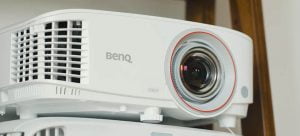In this guide you will learn about the main 3 types of microprocessors or classification of microprocessors in details.
Microprocessors are small, fast chips that control the performance of computers.
They are manufactured on a large scale by several companies, including Intel, AMD, and ARM. They are essential for modern computing and play a big role in everything from smartphones to drones.
Types of microprocessors (classification of microprocessors)
In general, there are mainly 3 types of microprocessors which is as follows:
- CISC – complex instruction set computers
- RISC – reduced instruction set computers, and
- Special purpose processors
The rapid development of microprocessor technology is motivated by high performance demands of various applications. Which is based on
- Processing speed
- Processing ability
- Communication ability, and
- Control ability
An imaginative as well as effective architecture for today could be easily available for tomorrow as every year new devices, new functions and new possibilities are introduced.
The classification made in this guide is based on current microprocessors. These are briefly described in below.
1. CISC
These types of microprocessors are microcode operated. Microcode could be a set of instructions (software) for microprocessor that run invisibly inside the chip.
As the processors are software operated, in general, performance of CISC is below hardware operated RISC processor.
However, the key point favoring the continued use of CISC processors is that of software compatibility.
A massive base of software now runs on CISC processors. Till-today, the most important CISC processors manufacturer is the Intel Corporation of USA.

Today some companies, say Advanced Micro Device (AMD), Cyrix and Nexgen manufactures Intel clone processors.
Other CISC manufacturer is that the Motorola corporation.
The listing of popular CISC processors is shown below.
- Intel – 8085, 8088, 8086, 80286, 80386SX, 80386DX, 80486SX, 80486DX, Pentium, dual cone, quard cone etc.
- Motorola – 6800, 68000, 68010, 68020, 68030, 68040 etc.
- AMD – 386DX, 486DX, K5, Athol 64×2 dual core.
- Cyrix – 486DLC, 486SLC2, etc.
- IBM – 386SLC, 486SLC2, Blue lighting
- TI (Texas Instrument) – 486 SLC/E, 486 DLC/E etc.
2. RISC
These types of microprocessors represent a recent development within the design of microprocessors.
RISC CPUs have fewer and simpler instructions programmed into ROM, yet still have the potential of performing complex tasks.
This feat is accomplished by combining simple instructions to create more complex ones. The advantage of the RISC architecture is speed where interval is greatly reduced.
One currently finds RISC technology incorporated into the planning of the CPUs accustomed drive workstations like those developed by IBM and Sun Microsystems, Inc.
Till now three basic problems of RISC processors are:
- PC software expects to determine the Microsoft OS environment and services.
- The applications are compiled to control on CISC based instruction set processors.
- Many older software-based applications expect to determine the precise PC hardware environment then directly access the PC’s hardware resources.
Now let’s see the list of popular RISC processors.
- DEC Alpha: 21064, 21064A, 21068 etc.
- SPARC: TMS 390S10.
- IBM, Apple and Motorola Power PC: 601, 604, 603, 620 etc.
- MIPs – R10000.
3. Special Purpose Microprocessors
These types of microprocessors are used for specific applications or to boost the performance of main processor.
A coprocessor can be said as an example of the special purpose processor. Most microcomputers support the employment of one or more coprocessors.
A coprocessor may be a special microprocessor designed to perform one or more specific tasks. the foremost commonly used coprocessor is that the math coprocessor.
Its use greatly hurries up the winding up of numerical calculations. Current trend of microprocessor manufacturer is to include the coprocessor within the most processor.
Intel incorporated a math coprocessor into its 80486 and Pentium chips.
Other available coprocessors which are generally serve to boost a computer’s capabilities regarding the quantity of systems and application software that may run on the pc.
Example: Intel 8087, 80287, 80387, 487 etc, Cyrix 83DS7, EMC87; Weitek 1167, 3167, 4167 etc.
Digital Signal Processor
This is one in every of the foremost important category of processors for digital signal processing, well-known as DSPs (digital signal processors).
These are specifically designed to handle real-world analog signals which are converted to digital representations.
These gives very high-performance instruction sets specifically designed to handle analog signal processing.
Some of the applications which DSP can support are given bellow.
- Sound and music synthesis
- Image processing
- Speech synthesis
- Modem functions
- Speech recognition
- Graphics acceleration
Most popular DSP manufacturer is the Texas Instrument. Examples: TMS 32010, TMS 320C40 etc.
Other Processors
There are many other types of microprocessors too. Special purpose processors like transputers used as multiprocessing elements having special communication facility.
Examples of transputers are: T425, T805, T9000 etc. Another category of future processors is VLIW (very long instruction word).
The basic idea is to pack several simple unrelated instructions into one super-instruction word and deliver it to the VLIW processor where it might be divided-up among a collection of parallel execution units for simultaneous executions.
However, I think after reading this post you have got a clear concept about all the main types of microprocessors with details.
Now, please don’t forget to share your experience and opinion about different types of microprocessors and their use.
Recommended articles:
Main 4 Functions Of A Computer
What is CPU? What are the major parts of CPU
How a computer takes decision? Decision taking overview of computer
Types of computer memory | Primary and secondary storage devices
Ports and types of computer ports with 10 example
How to build a Gaming PC | Top Gaming PCs
Different computer peripherals with details of them




